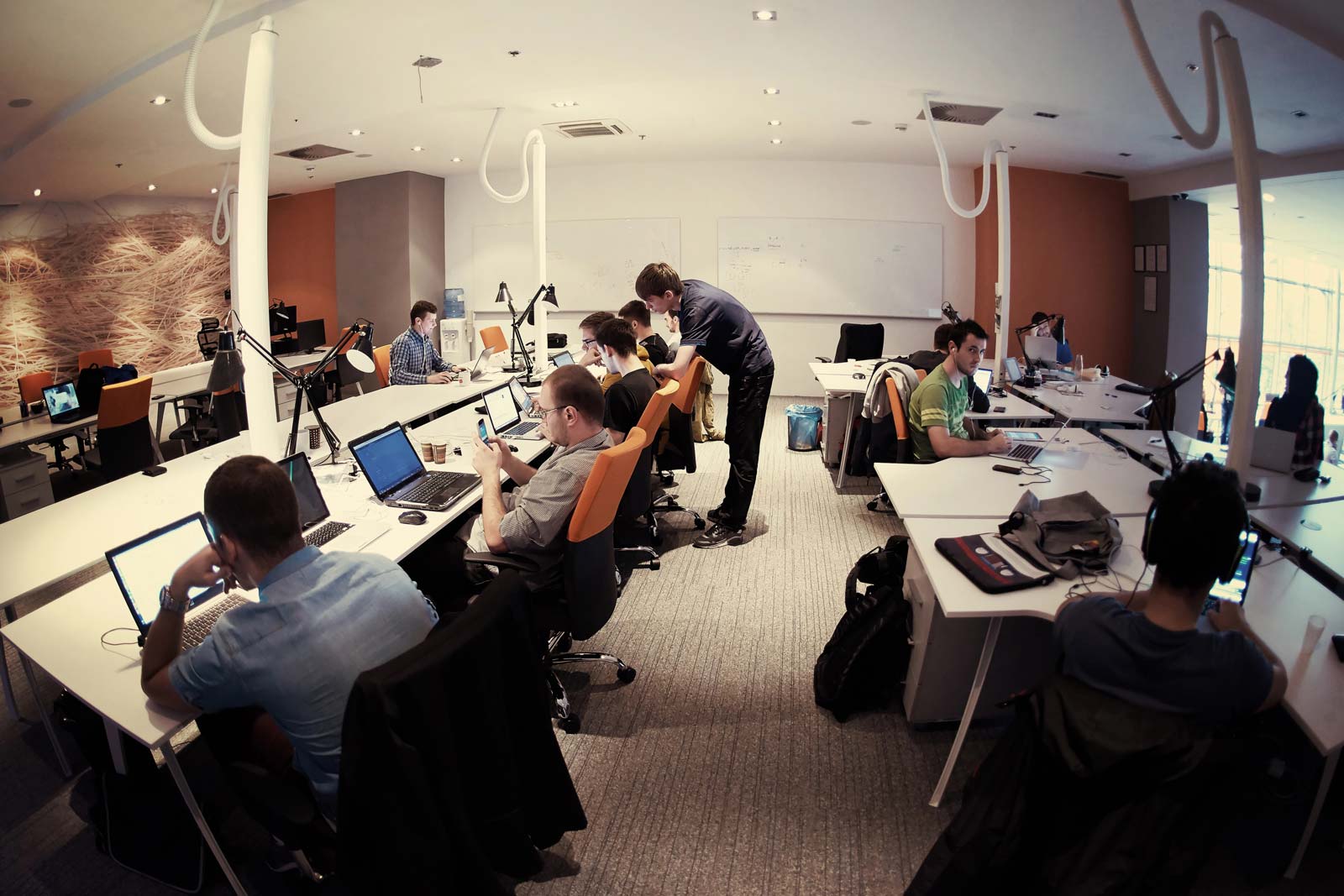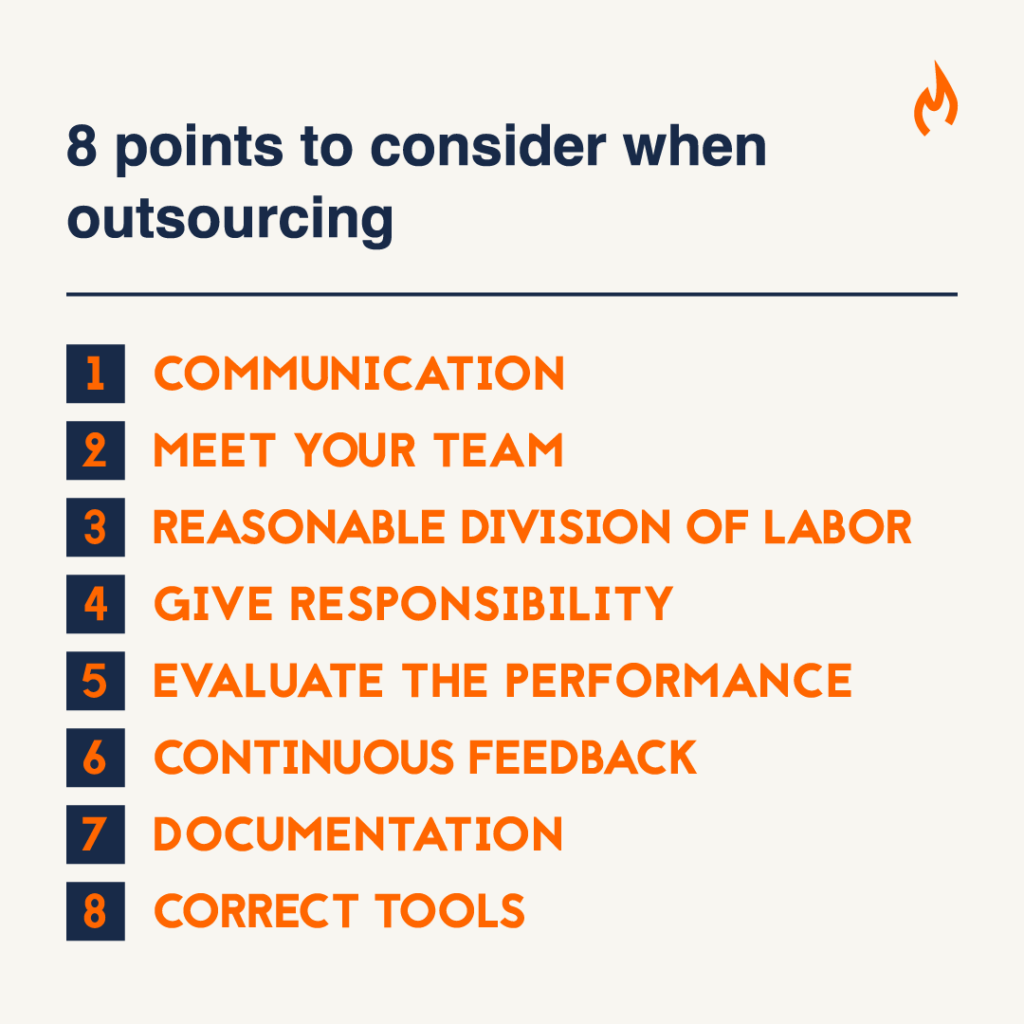Guide to nearshore software development

Domestic software development outsourcing is fairly common, but it becomes more complex when some or all of the work is outsourced internationally. Many people hold this assumption. There are also preconceptions or actual horror stories about failed overseas projects, which are unfortunate.
Software Sauna was initially set up precisely to correct this flaw in the market. We change the common perception of nearshore software development. Cost-effectiveness should not be reflected in a compromise on quality under any circumstances.
We want to share good tips and practices based on our own experiences. Successful software development projects are also done from distributed locations or by an independent remote team. So if you are considering outsourcing abroad or have encountered challenges, we are sure this information package will help you. In this article, we share our expert insights on nearshore software development services and teach you how to maximize the benefits of this trending outsourcing strategy.
What is nearshoring?
When a part of the software development team is outsourced to a nearby country, it is called nearshoring. In practice, nearshoring follows the same laws as buying domestic consultancy work. There are service providers for every need, from small and large consultancies to specialist consultancies in a particular niche. Often you can get a single developer from a nearshoring partner to support your development team or even a whole project team.
Nearshoring is the best option when a company wants to buy services from the same time zone (Europe +/- 2h) and minimize the challenges of cultural differences. Of course, there are also differences in working cultures within Europe, but these are not so significant compared to, e.g., Asia. Language skills, most notably in English, are also good in EU countries and neighboring regions.

When choosing a nearshoring partner, it is a good idea to check the company’s background and references and talk to their developers, not just their sales team and management. Take your time in the selection process to find the right people and a partner company that fits your needs. Competence and smooth communication play a significant role in the success of remote projects.
If language skills, the way of working, and the way of thinking meet, cooperation has a good chance of success. Nobody wants a partner whose processes are lacking, or whose consultants cannot independently add value for the client. So simply comparing hourly rates does not necessarily guarantee the best quality and fast delivery. We recommend that you also consider softer values and the consultants’ experience.
Good planning, communication, and implementation are the cornerstones of a successful project. This is even more important when all or part of the project team works remotely.

Software development nearshoring benefits
Nearshoring software development presents many benefits for businesses seeking efficient, cost-effective, and innovative solutions. As organizations strive to optimize their operations and leverage global talent, nearshoring emerges as a strategic approach that combines proximity, cultural alignment, and regulatory benefits.
Below, we delve into why nearshoring is a compelling choice for companies, exploring its cost-effectiveness, access to skilled talent, risk mitigation, and more. When you want to learn more about the benefits, check out our Software development nearshoring benefits in the EU blog post.
Cost efficiency
Nearshoring offers substantial cost savings by reducing operational expenses such as office space, utilities, and recruitment costs. Companies benefit from competitive development rates while maintaining quality, especially in regions like Southeastern Europe. The reduced overhead allows businesses to reallocate funds to core activities, enhancing efficiency and accelerating their go-to-market strategy.

Fast access to a skilled talent pool
Nearshoring provides quick access to highly qualified developers, minimizing recruitment challenges. Teams benefit from diverse technological expertise and innovative ideas, directly collaborating with skilled professionals across Europe. This approach eliminates unnecessary intermediaries, fostering effective communication and seamless integration into projects to deliver outstanding results.
Innovation and speed
Nearshoring partners bring fresh perspectives and creative solutions to projects, often leading to faster go-to-market times. Access to diverse viewpoints and technological trends fosters innovation, helping companies stay competitive and agile in rapidly evolving industries. This dynamic setting accelerates product development and market readiness.
Communication and cultural fit
Cultural and linguistic proximity within Europe enhances collaboration between nearshore teams and clients. Similar work ethics and overlapping time zones facilitate real-time communication and reduce misunderstandings. Effective communication coupled with cultural alignment ensures smooth project execution, supporting the achievement of business goals.
Easy scaling
Nearshoring offers flexibility to scale development teams up or down as needed. It provides a responsive approach to changing business demands, enabling companies to handle fluctuating workloads efficiently. This scalability ensures that resources are optimally utilized without the complexities of managing staffing levels, enhancing operational agility.
Tackling common software development challenges by nearshoring
In today’s software development environment, winning challenges is crucial for successful project delivery. Nearshore software development presents a strategic approach to managing and resolving these issues by leveraging resources from neighboring regions with minimal time zone differences.

Addressing budget constraints
One of the primary advantages of nearshore development is cost efficiency. By tapping into skilled labor markets that offer competitive pricing, companies can significantly reduce their development costs without sacrificing quality. This makes nearshoring an attractive option for companies looking to optimize their budget while still accessing top talent.
Enhancing team dynamics
Nearshore teams offer cultural and linguistic similarities that enhance collaboration and communication. These shared affinities contribute to smoother interactions and a more integrated workflow, allowing for a cohesive team environment that is conducive to innovation and productivity.
Effective remote management
Managing remote teams poses its own set of challenges, but the proximity of nearshore teams simplifies oversight. With overlapping working hours, project managers can maintain regular communication, quickly address issues, and ensure alignment in project goals and expectations, which enhances overall project management.
Tackling technical complexities
Navigating technical challenges is a critical component of software development. Nearshore teams often possess specialized technical expertise that can be leveraged to address complex development requirements. Their experience in similar projects adds value by offering innovative solutions and best practices that accelerate project progress.
Overcoming apprehensions about nearshoring
While some companies may have reservations about nearshoring, these concerns are often based on misconceptions. By choosing the right nearshore partner, businesses can mitigate risks and benefit from transparency, reliability, and commitment that parallel in-house teams, ultimately leading to successful project outcomes.
If you want to take a deeper dive into these challenges and how nearshoring can help you tackle them, take a look at our blog post: “The power of nearshore: tackling software development challenges”.
Busting the nearshore software development myths
Potential collaborators often encounter persistent myths about nearshoring that can affect their decision-making. Understanding and busting these myths reveals untapped potential for more cost-effective, skilled, and responsive software development partnerships. Here, we delve into the most common misconceptions, revealing the realities that make nearshore collaborations so beneficial.

Compromised quality
Fears of compromised quality in nearshore software development are unfounded. These teams emphasize excellence by following industry best practices and standards. In Europe, many renowned tech companies from Croatia and the Balkans, like us, showcase their proven expertise and dedication to delivering high-quality solutions. Their consistent success in various international tech initiatives further underscores their ability to maintain exceptional service quality and meet clients’ expectations effectively.
Time zone challenges
While time zones can be a nail-biter when executing offshore software development, nearshoring mitigates concerns about time zone differences. Europe is designed for nearshoring: countries operating on CET and EET ensure considerable overlap in working hours, facilitating real-time communication and collaboration.

This alignment allows for quick responses to issues and scheduling flexibility, enhancing the efficiency of nearshore partnerships. The proximity also means that any necessary in-person interactions can be planned with minimal workflow disruption.
Hidden costs
Hidden costs are manageable with detailed planning and transparency. Nearshore engagements thrive on effective communication and comprehensive risk assessments, addressing potential budget overruns from unforeseen expenses such as travel, infrastructure, and project modifications.
By fostering an upfront understanding of financial expectations and contingencies, these engagements enhance budget predictability and maintain cost efficiency without sacrificing project quality or timeline.
PS. There’s more! In our blog post “6 Common Nearshore Software Development Myths” we have listed even more myths – and we busted them all!
When to hire a nearshore partner?
Knowing when to leverage nearshoring is key to overcoming common tech challenges. Nearshore partnerships are ideal in five critical situations: when cost efficiency is needed to reduce overheads, when recruitment is slow and expensive, when speeding up product launches is essential, when filling talent gaps for temporary projects, and when accessing niche expertise in emerging technologies is required.
5 situations when you need a nearshore partner
- Need for cost efficiency and profitability: Nearshoring reduces overhead expenses, allowing funds to be allocated towards growth projects.
- Slow and expensive recruitment process: Nearshore teams provide pre-trained developers, speeding up the hiring process and reducing operational burdens.
- Speeding up product launch or updates: Nearshore partners accelerate the start of development projects, providing a competitive edge in market launch times.
- Talent gaps in temporary projects: Nearshoring offers flexible and quick access to specialized skills without long-term commitments, keeping existing teams efficient.
- Need for new technologies and niche expertise: Nearshore developers bring deep expertise in new technologies, enabling faster project execution.
Nearshoring enables businesses to scale faster, optimize budgets, and tackle specialized tasks efficiently without overburdening in-house teams. For a detailed breakdown of these scenarios, read the full article: The Perfect Timing – 5 Situations When You Need a Nearshore Partner.
What to consider with a nearshore software development team?

A successful multisite project requires a little extra effort from all parties involved. Especially if
- The project is to be implemented using agile software development methods.
- The client is working with a remote team for the first time.
We recommend that the client treats remote and onsite teams equally in distributed projects. The boundary between “us” and “them” should be blurred to get the best out of the collaboration. Below we list eight essential points to consider when outsourcing a part or a whole of a product development project based on our experience.
1. Communication
- Open and constant communication is the basis of everything.
- A sense of belonging – “our team.”
- Developers should communicate directly with the client without any intermediaries.
- Facetime: weekly or daily meetings via video rather than telco. Slack chat alone is not enough, either.
- A Team Lead, who is responsible for most of the communication, may work better for large outsourcing projects.
2. Meet with the customer or remote team
- Onsite kick-offs (powerful recommendation)
- Periodic meetings, e.g., quarterly if the project is long
- Visit your remote team regularly
3. Reasonable division of labor
Try to allocate tasks and responsibilities sensibly between different locations, according to the team’s abilities. A self-directed team decides on their tasks and division of labor, whether onsite or remote.
4. Give responsibility for technical decisions
Experienced developers often want to improve both themselves and the product they work with. As consultants, they are often eager and capable of providing improvement ideas and developing new ways of thinking. If you want to purchase a backlog clearance with as little room for interpretation as possible, that is a different service altogether.
At best, working with a remote team improves the organization through cross-learning and knowledge sharing.
5. Pay attention to the remote team’s performance
Following the performance of a remote team can be challenging, but there are ways to make it easier. A few simple ways to get started include a proper onboarding to the project, a project plan, clear goals and expectations for team members, and regular check-ins on how the team is performing.
6. Continuous feedback
The importance of communication and feedback cannot be underscored enough. Provide your remote team with the opportunity for open discussion and feedback. You should be interested in how they are progressing in their work and how you can improve together.
Give them the accountability they deserve. Feedback is essential even to an external partner, as this increases team spirit and further engages the team members.
Small things can make a big difference, but tackling them early can change things in the right direction. Be open, communicate, and listen.
7. Documentation
Well-structured and clear documentation helps all team members. When a new consultant joins the team or you start working with a remote team, the first impression of your documentation and source code means a lot. New developers will catch on much faster if your documentation is in order.
Explicit user stories in backlogs and using different systems and modern tools (e.g., Jira, Trello, Scrum, Kanban, etc.) help maintain good documentation and transparency.
8. Tools
Task boards are essential to modern development. Since the remote software development team is not in the same room as the onsite team, this can be organized with a tool like Miro. In addition to open communication, general transparency, and project tracking tools, there is more to a good development environment. What precisely is a good environment will always depend on the organization and the remote team, so there isn’t a one size fits all solution. Each team and project is unique.
In addition to the above, a good development environment should include the following:
- Bug and issue tracking
- Source code and repositories
- Code review system
- Release management
- Version control
- Slack, Google Meet, Teams, etc.

Is agile software development possible by nearshoring?
From a coder’s perspective on classic software development, the onsite culture is often justified, as workflow inevitably faces the so-called “integration hell” when the software is deployed. At this stage, intensive communication helps to locate and fix problems, so working remotely can have a negative impact on the process. In agile development, there is no separate integration phase because integration occurs after each code change, and each change is minimal. Because most or all parts of the integration process are automated, including testing, developers are immediately aware of problems.
The essential Agile development tools, CI/CD pipelines, perform all the steps from build to unit testing to deployment in an integration testing environment. This continuous delivery workflow eliminates the difficult integration phase and enables true agile development. Code can be written anywhere, anytime, as long as there is constant communication. For the customer, this has the positive effect of allowing them to seamlessly see the results of continuous development and new functionality in their product (eliminating the need for physical presence).
Several global pioneers in the technology sector operate in a fully decentralized organization, with all their employees working remotely worldwide. From a software developer’s perspective, the best-known of these companies are GitLab, Automattic Inc (WordPress), Basecamp, and the Finnish pioneer Leadfeeder. GitLab mentions that this allows them to hire the best and most motivated employees globally with higher productivity. The decentralized organization also allows the company to scale up more quickly.
Nearshore software development FAQ
Want to learn more about nearshoring? We’re happy to share. Send us a message, and we’ll contact you. Then, let’s introduce ourselves and check your situation.






